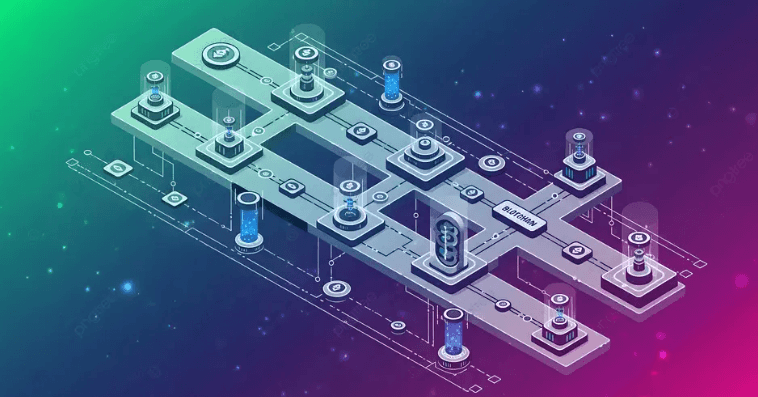-
Introduction
As the cryptocurrency market continues to expand, security remains a top priority for investors, exchanges, and developers. With cyber threats becoming increasingly sophisticated, the industry is continuously evolving to implement robust security measures. By 2025, significant advancements in cybersecurity, fraud prevention, and asset protection are shaping the future of digital finance. This report explores the latest security trends in cryptocurrency markets, the emerging challenges, and the technologies designed to safeguard digital assets.

-
Key Security Trends in 2025
2.1. Enhanced Blockchain Security Protocols
- Blockchain networks are implementing stronger encryption methods and advanced consensus mechanisms to mitigate attacks.
- Improvements in quantum-resistant cryptography are being developed to protect against potential threats from quantum computing.
- Multi-layer authentication protocols are being integrated into smart contracts to prevent unauthorized transactions.
2.2. AI and Machine Learning in Threat Detection
- Artificial intelligence (AI) is being utilized to detect suspicious transactions and prevent fraudulent activities in real-time.
- Machine learning algorithms analyze blockchain data to identify patterns associated with hacks, scams, and illicit activities.
- AI-driven fraud detection systems enhance the security of cryptocurrency exchanges and digital wallets.
2.3. Decentralized Identity and Security Solutions
- Decentralized Identity (DID) systems are being adopted to enhance user authentication without compromising privacy.
- Zero-Knowledge Proof (ZKP) technologies allow users to verify their identity securely without revealing sensitive information.
- Biometric authentication methods, including facial recognition and fingerprint scanning, are being integrated into crypto wallets.
2.4. Advanced Security for Cryptocurrency Exchanges
- Exchanges are improving security by implementing multi-signature wallets and cold storage solutions to protect user funds.
- Decentralized exchanges (DEXs) are enhancing smart contract audits and governance models to reduce vulnerabilities.
- Regulatory compliance standards require exchanges to undergo regular security audits and stress tests.
2.5. Strengthening of Decentralized Finance (DeFi) Security
- DeFi platforms are adopting smart contract insurance to cover losses from potential exploits or hacks.
- Cross-chain bridges are being reinforced with stronger security protocols to prevent breaches.
- Continuous bug bounty programs incentivize ethical hackers to identify and report vulnerabilities before malicious actors exploit them.
-
Major Security Challenges
3.1. Rising Sophistication of Cyber Attacks
- Phishing attacks, ransomware, and social engineering schemes are evolving to target cryptocurrency users and organizations.
- Supply chain attacks on software dependencies pose risks to blockchain applications and decentralized platforms.
- The emergence of AI-powered hacking tools increases the need for proactive cybersecurity defenses.
3.2. Regulatory and Compliance Issues
- Compliance with international security regulations varies across jurisdictions, creating inconsistencies in protection measures.
- Privacy-focused cryptocurrencies face scrutiny, leading to increased regulatory pressure on anonymous transactions.
- Governments are implementing stricter anti-money laundering (AML) and Know Your Customer (KYC) requirements to mitigate risks.
3.3. Risks Associated with Quantum Computing
- Quantum computing advancements could potentially break traditional cryptographic security used in blockchain networks.
- Researchers are working on quantum-resistant encryption methods to safeguard cryptocurrency transactions from future threats.
-
The Future of Cryptocurrency Security
4.1. Adoption of Quantum-Resistant Cryptography
- Blockchain developers are integrating post-quantum cryptographic algorithms to future-proof networks against quantum attacks.
- Security experts are working on hybrid encryption models that combine classical and quantum-resistant cryptographic techniques.
4.2. Increased Collaboration Between Governments and Industry
- Regulatory bodies and cryptocurrency firms are collaborating to establish global security standards.
- Law enforcement agencies are using blockchain analytics tools to track and combat illicit activities.
- International cooperation is enhancing efforts to prevent cybercrime in the digital asset space.
4.3. Greater Focus on User Education and Awareness
- Awareness campaigns are being launched to educate users on best practices for securing their digital assets.
- Enhanced user interfaces (UI) and security prompts in wallets and exchanges help prevent human errors that lead to security breaches.
- The adoption of hardware security modules (HSM) and multi-signature authentication improves individual asset protection.
-
Conclusion
The cryptocurrency market in 2025 is evolving with cutting-edge security technologies designed to combat emerging cyber threats. From AI-driven fraud detection to quantum-resistant encryption, the industry is prioritizing the protection of digital assets. However, challenges such as sophisticated cyberattacks and regulatory inconsistencies remain. Moving forward, continuous innovation, collaboration, and education will be essential to ensuring a safer and more resilient cryptocurrency ecosystem.
Disclaimer: This article is for informational purposes only and is not investment advice. Investors should research carefully before making any decisions. We are not responsible for your investment decisions.
















